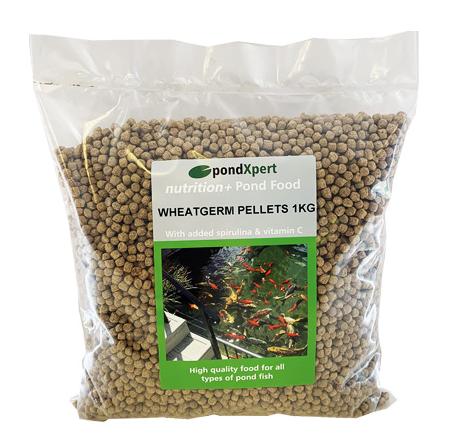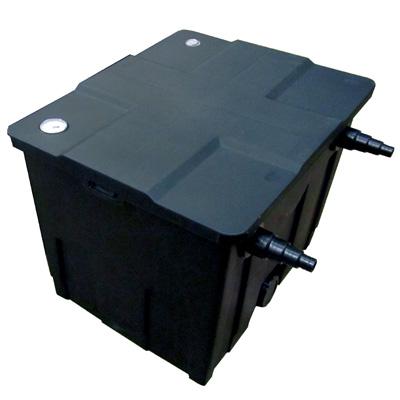Autumn Pond Care
As the days get shorter and the weather gets colder, you know autumn is upon us. This can be a critical time for a pond to ensure it is prepared for the winter months and is in perfect order for when spring comes back around. It is important to start this work as soon as possible, just in case the weather turns unexpectedly. Plants, fish, and equipment all have their individual needs at this time of the year; so its important not to leave the Autumn care too late.
Plants and Debris
As the weather changes, the pond plants begin to die back. You need to remove this dead vegetation quickly to prevent a build up of decaying organic matter. This is also true of marginal plants and it is a good idea to cut these back to ensure nothing falls from these into the water; an easy way to cut these back is with the Velda Pond Scissors and Grabber. If not done, it can cause massive problems later on as the decaying vegetation will cause a large chemical imbalance in the pond water alongside creating a large layer of sludge at the bottom of the pond.
You should also temporarily put a cover net over the pond in Autumn and Winter; this will catch tree leaves and debris. Alternatively, you can use a pond skimmer to remove debris from the surface of your pond. Leaves that have made the way into the pond can cause the water to turn brown from the tannins in the water, or the pond may turn cloudy from the sludge that forms at the bottom of the pond.
You may also want to purchase a Pond Vacuum, as these units can remove the sludge from the bottom of your pond.
The last consideration is to ensure any non-hardy plants are looked after and either taken inside or covered appropriately to make sure they survive the colder temperatures.

As the temperature begins to drop it is important to prepare the fish in the pond to survive the winter. Once the water temperature drops below 10-12 degrees you should start to feed the fish a low protein diet (like winter wheatgerm pellets); the temperature can be measured using a PondXpert Floating Thermometer. As the water gets colder, the fish's metabolism slows down and their ability to digest high-protein foods decreases. If your fish eat any high-protein food, it may go undigested and can have harmful effects, as well as adding contaminates to the water which increase the chances of catching a disease.
Once the temperature drops below 6-8 degrees then feeding should stop completely as the fish will very rarely come to the surface and have basically shut down for the winter.
A common way to monitor how hungry your fish are is to use a feeding ring; any uneaten food will remain in the ring and can be safely removed before the food sinks and forms sludge.

As above, the activity of plants and fish slows down as temperatures decrease. Once the water temperature reaches around 8-10 degrees C the filters and UV units can be switched off completely, removed, cleaned and stored for use next season. As well as being a perfect opportunity to give all the equipment an annual deep clean and service, you also prevent any frost or freeze damage to the equipment. Please see more information on filter maintenance here.
It is common practice to raise the pump within the pond to avoid mixing the warm water at the bottom of the pond with the cold water at the top of the pond. This is a great time to do the general maintenance to the pumps as per the specific manufacturer's instructions. If you have fish, the pump can then be placed back into the pond to prevent the water from freezing over. If you do not have fish and the temperature of the pond is between 8-10 degree C, it is a good idea to completely remove the pump, to clean, dry and store like the filter and UV units.
General Maintenance
The final pre-winter check to do is the water quality. You can get an all in one water test kit from most aquatic shops and it only takes a few minutes. We sell both the Tetra Pond Test 6-in-1 and the Blagdon Pond Health Test Kit. A few minutes now will potentially save you a lot of time come the spring. An imbalance in either the nitrate, nitrite, or ammonia levels can cause a massive algae bloom in the spring when the water temperatures start to rise. There are plenty of affordable treatments for ponds which will address all of these issues.
You may also want to purchase a pond heater; these are small devices which sit on the surface of the pond and keep a patch of water warm, to prevent ice from forming. This is important as the ice prevents gases from exchanging, which allows toxic gases to build up under the ice. You may find our 'What To Do If Your Pond Freezes Over' blog useful, as it includes some details on how to prevent this from happening.
You may also find the below blogs useful:
• September Pond Care
• October Pond Care
• November and December Pond Care
• Why is my Pond losing water?
• Why do chemicals in the Pond fluctuate?
If you have any queries, please contact us on info@pondkeeper.co.uk.